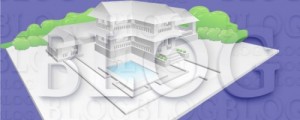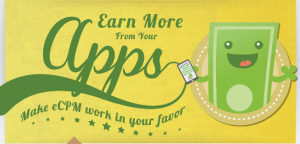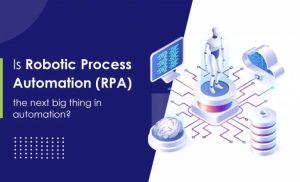It’s incredibly sought after in leadership and encouraged in individual reports, but it can be incredibly difficult to cultivate if you don’t fully understand it.
Learning agility doesn’t have to be a novel skill. If you follow the right tips and learn how to reinforce and enable your team, you’ll see growth in both your company and in your own career.
We’ll dive into how below.
Why Learning Agility Matters In Your Career
Learning agility gives you the leverage you need to pivot and adapt in the middle of uncertainty and change. Being able to connect your past experiences to your present situation is invaluable, especially if you work within an evolving industry.
In today’s day and age, if you aren’t able to effectively adapt, then you run the risk of becoming incompetent in your role.
With technology advancing at breakneck speeds and new processes being introduced, it’s not difficult for employees to fall behind and drag their company back with them.
Having the skills necessary to grow and be productive in changing conditions isn’t just a positive perk to push your career forward (which it certainly will), but it’s also a means of keeping your head above water as industries evolve.
Learning Agility Assessments You Need to Try
It should be important to note that not everyone has the same level of agile learning ability, nor do we all exercise it in the same capacity. There are actually five dimensions to learning agility:
- Mental
- People
- Change
- Results
- Self-awareness
You can display varying degrees of strength in any of those dimensions, and then characterize yourself as one of the seven learning agility profiles:
- Problem solvers
- Thought leaders
- Trailblazers
- Champions
- Pillars
- Diplomats
- Energizers
But how do you know which profile you fall under? How do you identify your strengths and weaknesses? Well, you discover it like you would any other skill. Through assessments.
In order to know how you can improve your learning agility and what to focus your attention on, you’ll need to identify any gaps. Learning agility assessments are great tools for this.
Here are a couple of suggestions to try out:
Mettl Learning Agility Assessment
A popular choice in today’s market, the Mettl Learning Agility Assessment is great for creating a talent pool composed of high potential employees.
Hiring managers and recruiters can also make better hiring decisions based off of an alignment of skills they’re in need of and candidates’ test results.
Burke Learning Agility Suite
Burke’s assessments and resources on agile learning are great for performance management, leadership development, and succession planning.
Through coaching and guidance, organizations can generate development plans that prioritize reinforcing strengths and building up from weaknesses on a team, function, and company level.
How to Improve Your Learning Agility
Thankfully, learning agility isn’t a set-in-stone skillset. Not everyone is born an agile learner, but that doesn’t mean it can’t be learned or improved upon.
In order to grow as an agile learner, it’s recommended that you focus on:
Innovating
Always be on the lookout for new solutions to problems you face. Sometimes it pays off to go beyond the first idea that comes to you.
Ask yourself, “What else?”
If you find yourself hesitant or sticking to tried and true ideas, question what’s holding you back.
A great exercise to surpass that obstacle is to create a list of radical solutions to try. You don’t necessarily have to do all of them, but building the habit of exploring different avenues can make opening yourself up less uncomfortable and feel more natural.
Performing
In order to get things done quickly, we all have a tendency to glimpse over the finer details and just tackle it without much thought.
Instead, take the time to consciously identify patterns and similarities in complex situations, both past and present. You’ll open yourself up to lessons you’ve already inherently learned, as well as the wisdom of others.
By putting more focus into how you perform under pressure, you’ll find that when you take the time to listen and think, rather than react, you’ll be able to approach problems with a level head.
Find your zen in the stressful moments. That’s where clarity comes through.
Reflecting
When you actually take the time to reflect on your experiences and dive into why things happened the way they did, that’s when you learn.
It’s wise to consider the maybes and what-ifs. Ask for outside input on how you’ve handled past situations in the form of open-ended questions. Get constructive feedback.
Reflection leads to growth, which evolves into wisdom, which will make you a more agile learner. You can’t learn from experience if you never consciously go back over the experience after it’s finished.
Risking
Don’t run away from new challenges! This is how you acquire and develop new skills. You never know how a new perspective will be able to aid you in the future, so chase the unknown outside of your comfort zone.
Find scenarios that will be productive or meaningful, but won’t risk any heavy consequences if you fail.
Also, don’t be afraid to fail. You can learn just as much, if not more, from messing up as you can from succeeding.
Not Defending
When you do fail, don’t wallow in it or try and hide it. Acknowledging your losses opens you up to learn from them.
If you dedicate any significant amount of time trying to defend yourself against criticism or embarrassment, then you’re not looking at the lesson in the experience.
Seek out feedback from people you trust and resist responding to or justifying it. Take a beat to really hear what’s being said and figure out how you can apply it to similar situations in the future.
You’ll have one more asset added to you arsenal if you keep yourself open to the fails and falls.
Building up and improving learning agility takes time and commitment, but it can lead to some truly phenomenal results. Especially when you can apply those newly advanced skills in your workplace.
Take the time to see what level you’re starting at with an assessment and then hit the ground running in growing beyond that.
Business & Finance Articles on Business 2 Community
(42)







